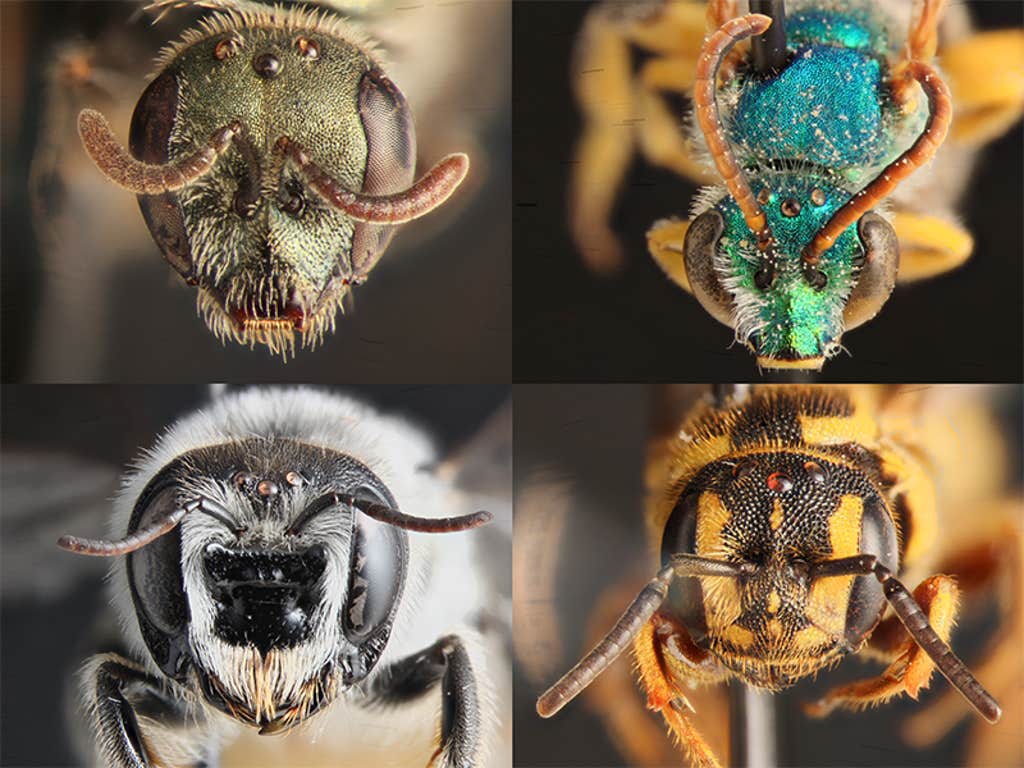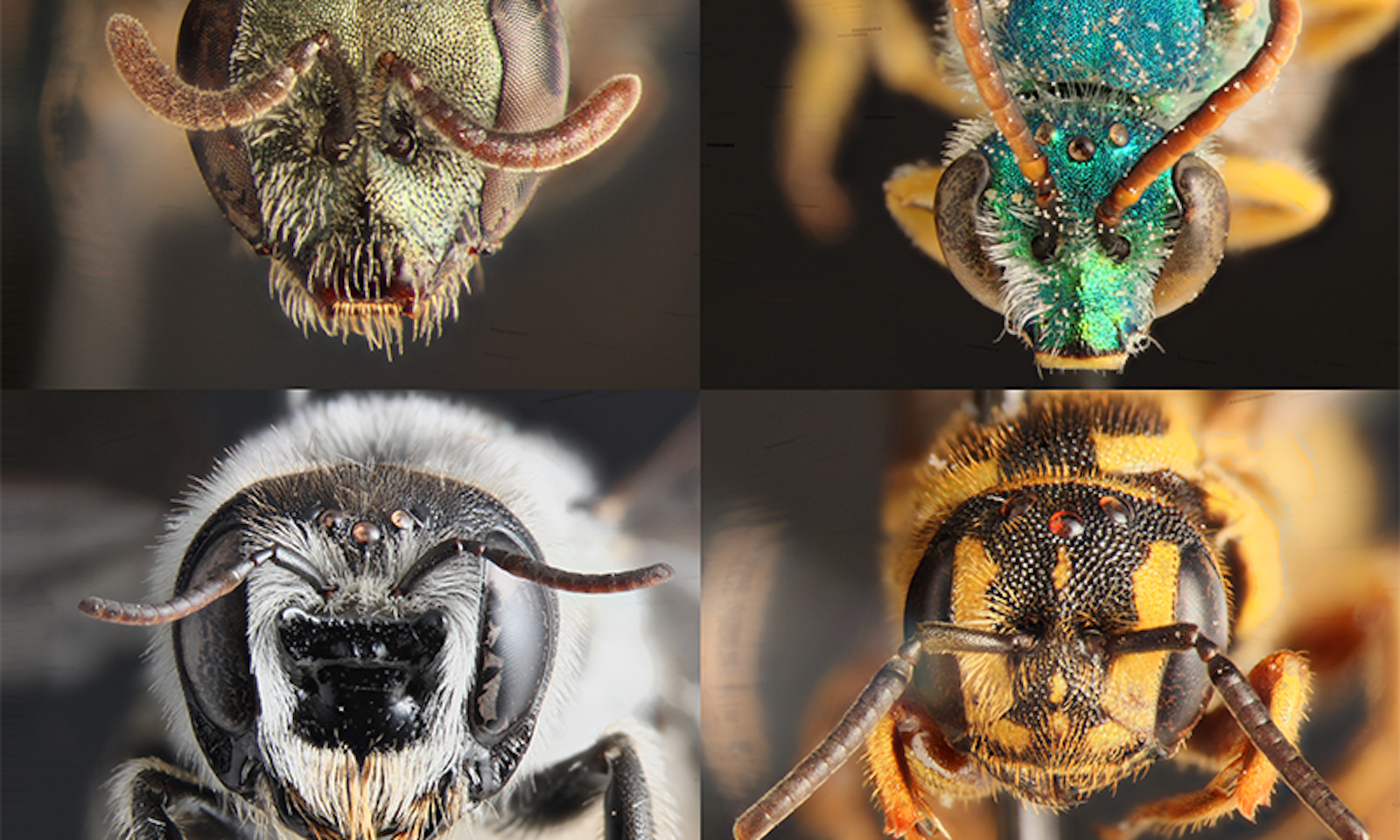San Diego is home to 700 bee species. That’s a lot. Researchers Jess Davids, a biologist at University of California, San Diego, and James Hung, assistant professor of biology at the University of Oklahoma, have been documenting the bees who live in the county to help conservationists better protect them—and draw the interest of local citizen scientists.
Recently, the photograph above was selected by online voters from a database of thousands as a winner in the UC San Diego Library’s annual Art of Science contest. It shows four San Diego species (clockwise from top left): brown-bellied metallic sweat bee (Lasioglossum brunneiventre), Texas striped sweat bee (Agapostemon texanus), wide-belted dark bee (Stelis laticincta), and orange-tipped woodborer bee (Lithurgopsis apicalis).
The photograph is on view with the other winning images at the San Diego Library and the San Diego Natural History Museum through Jan. 15, 2024. (A digital exhibit will remain online in perpetuity.) We caught up with Davids at San Diego Natural Museum of History’s Art of Science show last week to talk about the image, her work, and how citizen scientists can help save the bees.
What does this image show?
The name of this image is “Face the Bees.” It is a small subset of the project that we were working on, myself and James Hung, where we surveyed the entire county of San Diego for all the native bee species. We have over 700 species in San Diego county. You’ll notice that the different bees have different appearances. Form often dictates function and there are a lot of different ways of living and making a living as a bee.

Is 700 bee species a lot for a place the size of San Diego?
San Diego is considered a bee biodiversity hotspot, so our small county is really rocking it with the bee numbers here. Within the world there’s about 20,000 bee species.
Why is San Diego such a bee biodiversity hotspot?
We have high ecosystem and plant diversity here, so it can host a large diversity of bees as well.
Do the different colors play a role in how the bees live?
Yes. So Agapostemon texanus, the Texas striped sweat bee, on the upper right in the frame, actually has a really cool feature—not necessarily the way that they get their food, but the way they present to the world. So they have a feature called sexual dimorphism, which means that the two sexes—male and female—present differently. So the males have a striped black and yellow abdomen versus the females, who are all that sort of metallic greenish-blue color. The males only have that coloring on their head and thorax.
Our small county is really rocking it with the bee numbers.
Can you use these photos for research purposes?
These photographs represent the bigger picture research, where we go out and we collect and document these species and preserve them for later generations to learn about. Sharing that with the world through photographs is part of that effort. Because we want to protect what we know and what we love. So this has the function of inspiring others to become more familiar with the native bee species, and by association the plants that they require for their day-to-day life. I hope people not only look at it and see the beauty, but also feel inspired to document local bees themselves and contribute to citizen science. Anyone with a cell phone can load pictures into an app called iNaturalist, which can collect these citizen-science photos and turn them into a scientific data point that researchers actually do use.
What is the bee data telling you so far?
James Hung and I published a paper in Ecology in 2019 that talks about ecological niches and the impact of urbanization and urban sprawl on bee species. So what’s interesting is that the Lasioglossum bee featured on the upper left of this photo is from a genus that has been found to be really resilient in the face of changes in their environment. And that’s not the case with all bee species.
What role can art play in science?
I think they’re very interconnected. I think data is only valuable when you can share it. In our influencer world, art allows you to tug at heartstrings and invite every citizen to engage. ![]()
Lead image by Keng-Lou James Hung and Susan Chen
*An earlier version of this article incorrectly stated the number of bee species in San Diego County.
































